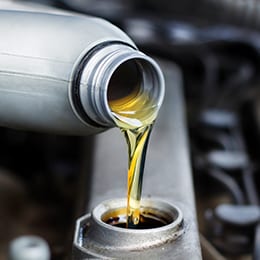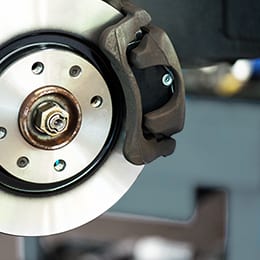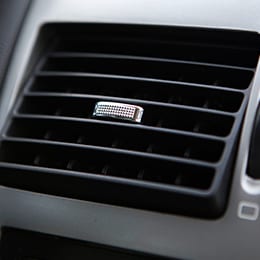What Is A Wheel Alignment?
The suspension system in a vehicle is made up of several different components that work together to support the vehicle and turn the wheels. Alignment is the geometry of the suspension system, ensuring all wheels are in the same line to rotate at the same speed and direction. Perfection is key as any variation of the geometry can impact the vehicle’s suspension. Vehicles that have poor suspension, or that have fallen out of alignment, may experience poor ride quality, difficulty braking, reduced fuel efficiency, and accelerated tire wear.
Camber, caster, and toe are the angles that are calculated in the alignment process.
Camber: The angle that the wheel and tire stand in relation to the road. Camber is often positioned with a slight slant as opposed to completely perpendicular to counter the forces from cornering.
Caster: The top to bottom angle of the steering axis and suspension components as they meet the wheel. The caster setting is what ensures your car drives in a straight line by providing directional stability and returnability once a turn is complete.
Toe: The side to side difference in distance between the front and rear tires.
Wheel Alignment Process
When a technician performs a wheel alignment service, they’ll measure the camber, caster, and toe of the vehicle’s current alignment using an alignment machine. The machine measures the position of each wheel and compares it to the vehicle manufacturer’s suspension specifications and provides details on how the vehicle needs to be adjusted to achieve the correct alignment.
For Camber: If the top of the wheel is slanting out from the center of the car, the camber is positive. If it’s slanting in, the camber is negative. Camber that is out of adjustment causes wear on one side of the tire.
For Caster: If the top of the steering axis is leaning toward the rear of the car, caster is positive. If it’s leaning towards the front, it is negative. Caster can cause straight line tracking. If the caster is different from side to side, the vehicle will pull to the side of the less positive caster. If the caster is too negative, the steering wheel will have ‘play’ and the vehicle will wander, making it difficult to drive in a straight line. If the caster is too positive, it makes steering more difficult.
For Toe: Toe-in means that the front tires are closer to each other than the rear tires. Toe-out is the opposite. An incorrect toe-in increases wear on both tires equally. Often referred to as a saw-tooth pattern, if the sharp edges of the tread are pointing to the center of the vehicle, there is too much toe-in. If the treads are pointed towards the outside of the car, there is too much toe-out. Depending on the vehicle’s suspension system, most cars are adjustable on the front wheels (front-wheel drive) and on some vehicles, the rear wheels are adjustable (rear wheel and all-wheel drive).
Professional Tire Inspection
Tires need to be evaluated in a few different ways. First and foremost is correct tire pressure. To get the most life, handling, and performance on any vehicle, tire pressures must be maintained. Secondly, a professional will check the tire tread depth as well as look for signs of cupping, separation, or excessive edge wear. Many tire issues can be identified visually without the use of special equipment such as a tire balancer.
Frequently Asked Questions About Wheel Alignments
Q: How often should you get a wheel alignment?
A: Wheel alignments should be performed whenever new tires are installed and at least once per year. Some driving conditions such as frequent travel over rough terrain, severe bumps against curbs, or vehicle modifications affecting suspension may necessitate more frequent alignments.
Q: What does a wheel alignment do?
A: Wheel alignment measures and adjusts all four tires and wheels to the manufacturer’s recommended specifications to provide maximum performance, fuel efficiency, and braking.
Q: What is the cost of a wheel alignment?
A: Wheel alignment costs may vary from vehicle to vehicle. To determine the cost of an alignment for your specific car, truck, or SUV, contact a Sun Auto Service near you.
Q: How long does a wheel alignment take?
A: Most alignment services take approximately one hour to complete.




